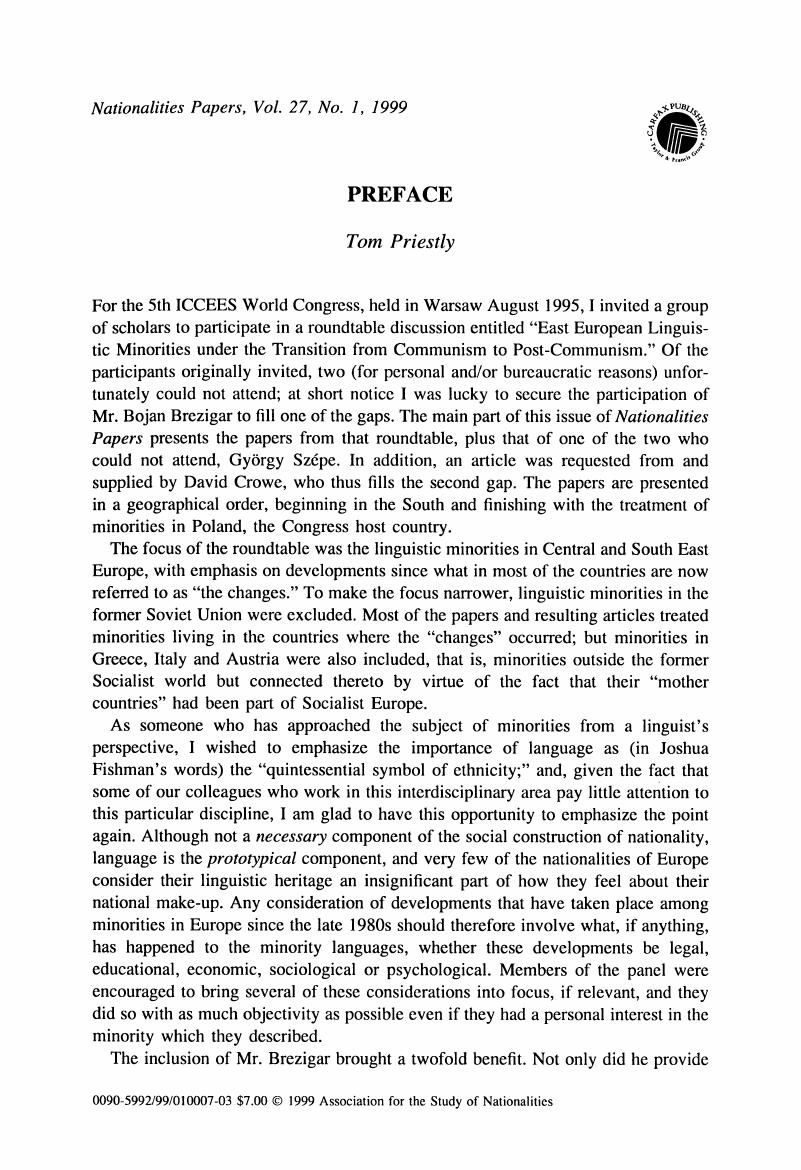No CrossRef data available.
Published online by Cambridge University Press: 20 November 2018

1. Both the Charter and the Framework Convention were subjected to some minor editorial changes—mostly spelling and punctuation—since the documents as I received them were not expressed in flawless English. Any citations from these documents should be made with this proviso in mind. Mr. Brezigar is now President of EBLUL.Google Scholar
2. Riemersma, Alex, “Netherlands Ratifies the Charter for Regional and Minority Languages,” Contact Bulletin, Vol. 13, No. 2, Summer 1996, p. 6.Google Scholar
3. The system adopted here for representing geographic names that obtain in two or more languages is as follows. The first citation is in both (or all) forms of the name, with the name in the contemporary standard language of the country first (for ease of reference), followed by the other forms; where there are more than two forms of the name, the second is that of the minority which is the subject of the article. All subsequent citations are in the second-cited form, to emphasize the minority in question; unless there is a well-known English version (thus: Transylvania), in which case this is preferred. Example: the major city in Transylvania—first citation: “Cluj/Koloszvár/Klausenburg”: Romanian “Cluj” first, because it is in Romania; “Koloszvár” second, because the article is about the Hungarian, not the German, minority; second and all subsequent citations: “Koloszvár.”Google Scholar